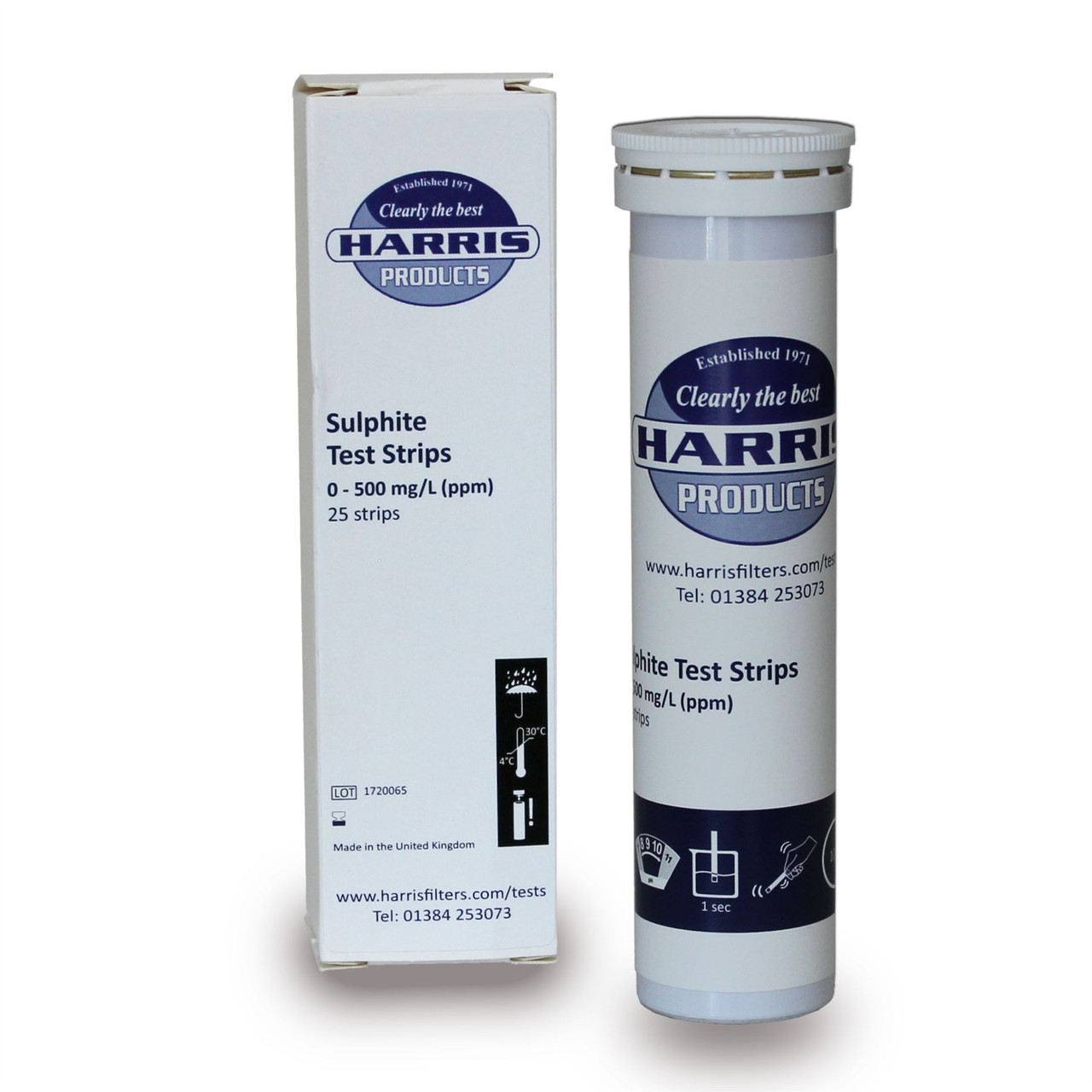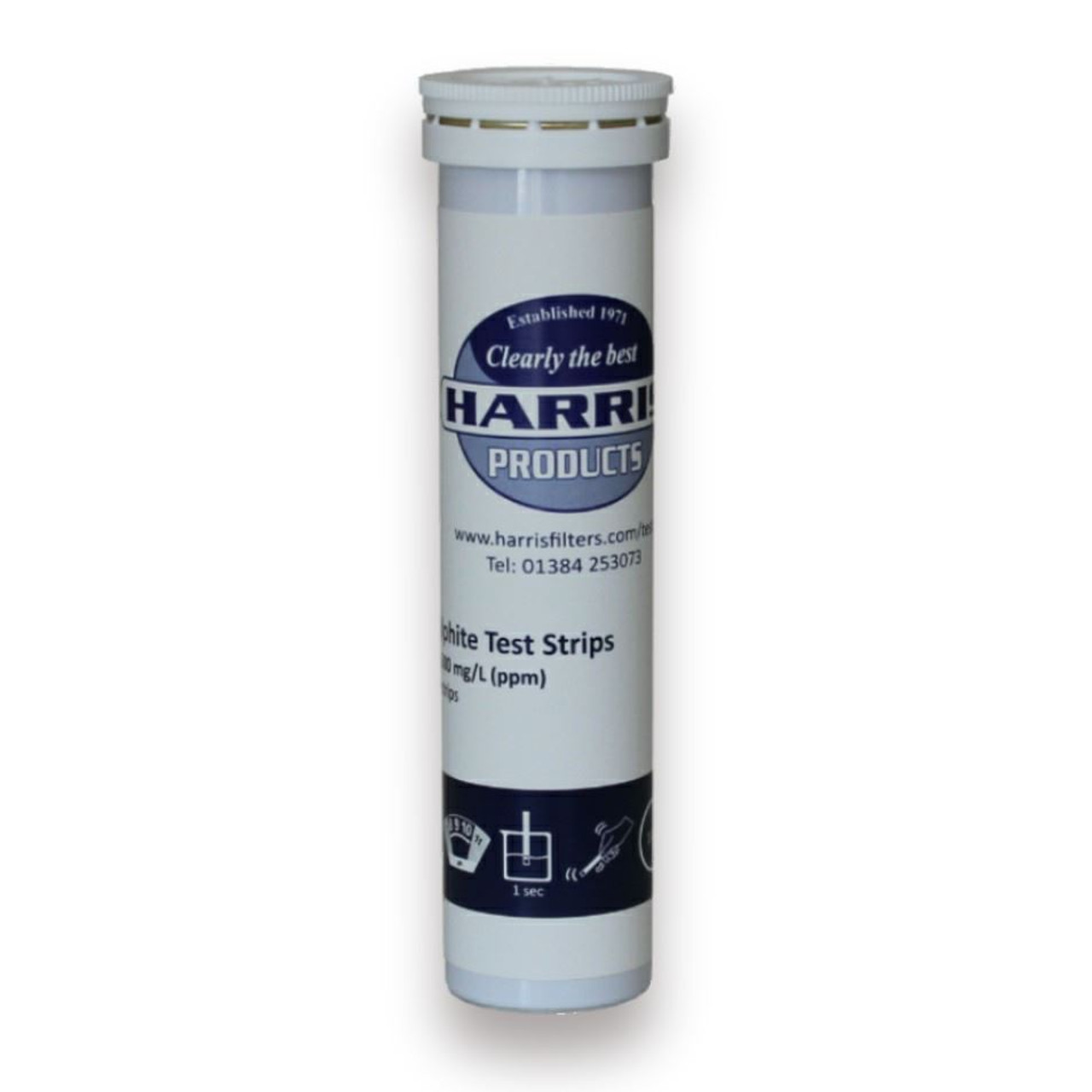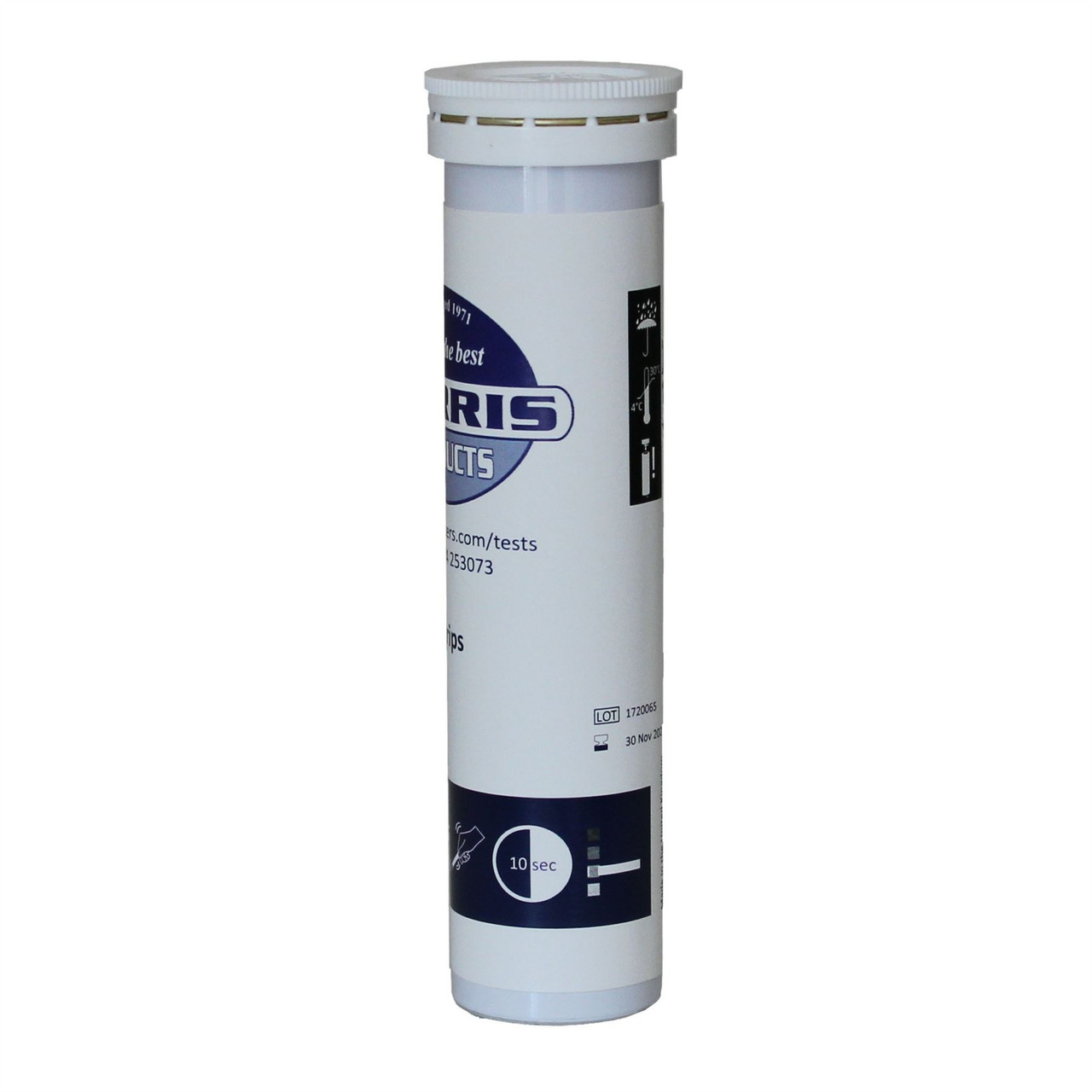Product Description
Harris Sulphite Test Strips allows a quick and easy method to determine the sulphite in solution.
25 Strips 0-500 mg/L (ppm)
This test will indicate the ranges of 10, 50, 100, 250 and 500 mg/L (ppm).
A target with a level of 50 mg/L at fruit crushing, or up to 100 mg/L if you suspect any problem, such as mouldy fruit is ideal. Any higher than this and the yeast will find it difficult to ferment.
Sulphite is commonly used as an oxygen scavenger in process and boiler water. To avoid resulting in excessive levels of sulphite, the concentrations need to be controlled for which the Sulphite Indicator Strips can be used.
These strips may also be used to control sulphite concentrations in food treated with sulphur compounds and in the process of winemaking.
The term �sulfites� is an inclusive term for sulfur dioxide (SO2). SO2 is a preservative and widely used in winemaking and most food industries, because of its antioxidant and antibacterial properties. SO2 plays a very important role in preventing oxidization and maintaining a wine�s freshness. In fact, there are really very few wines that are made without some use of SO2 as wines without any SO2 generally have a shorter shelf life of about six months, and need to be kept in perfect storage conditions.
In the EU the maximum levels of sulfur dioxide that a wine can contain are 210 ppm for white wine, 400 ppm for sweet wines and 160 ppm for red wine. It may seem strange that Red wines typically contain fewer sulfites but they contain tannin, which is a stabilizing agent, and also almost all red wines go through malolactic fermentation. Therefore, less sulfur dioxide is needed to protect the wine during winemaking and maturation.

























